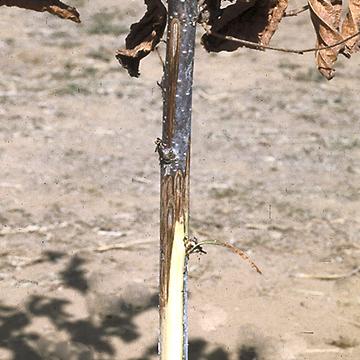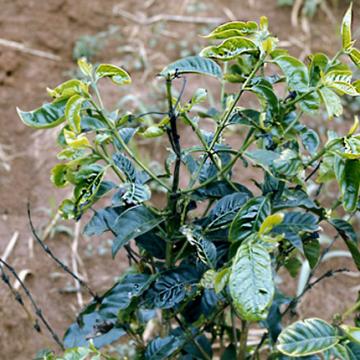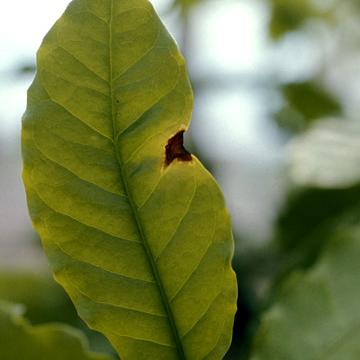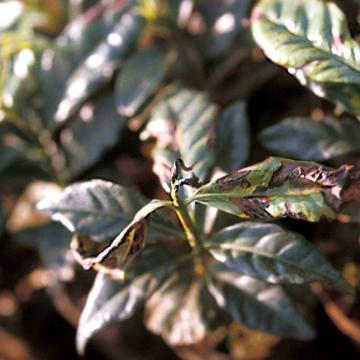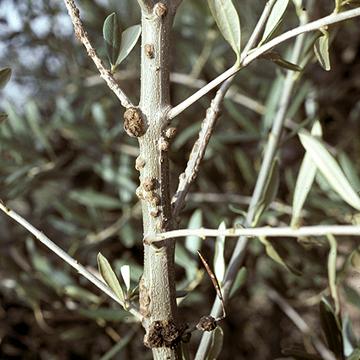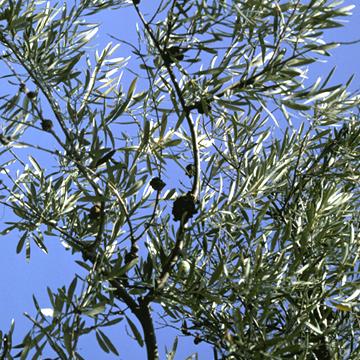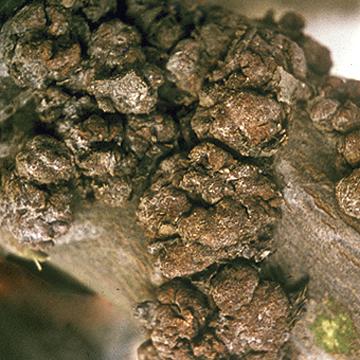DISEASE: Bacterial blight
HOST: Hazelnut
Diseased young tree with discoloration of the cambium. Dieback of young twigs and branches is characteristic. Other typical symptoms are bud and twig necrosis and small, angular or round, water-soaked leaf spots.
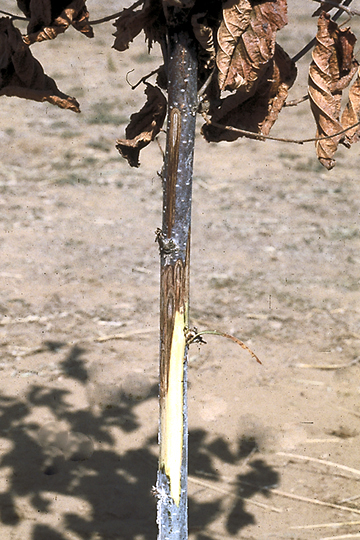
Bacterial blight | Hazelnut
DISEASE: Bacterial blight
HOST: Hazelnut (Corylus americana)
PATHOGEN: Xanthomonas arboricola pv. corylina
SOURCE: J. Pscheidt
DISEASE: Halo blight
HOST: Coffee
Leaf with blackish lesions surrounded by yellow halos.
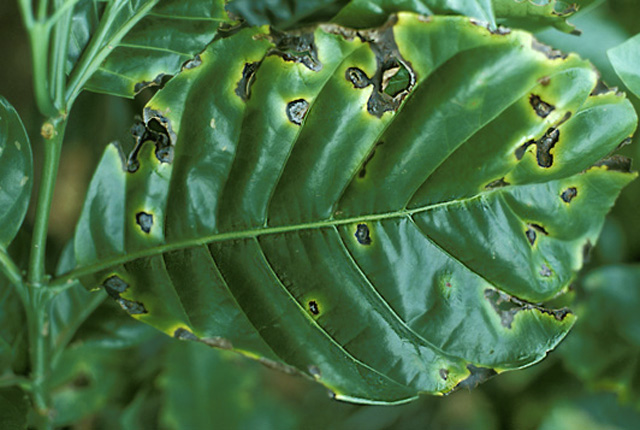
Halo blight | Coffee
DISEASE: Halo blight
HOST: Coffee (Coffea dewevrei)
PATHOGEN: Pseudomonas syringae pv. garcae
SOURCE: S. Mohan
DISEASE: Halo blight
HOST: Coffee
Young blighted coffee plant.
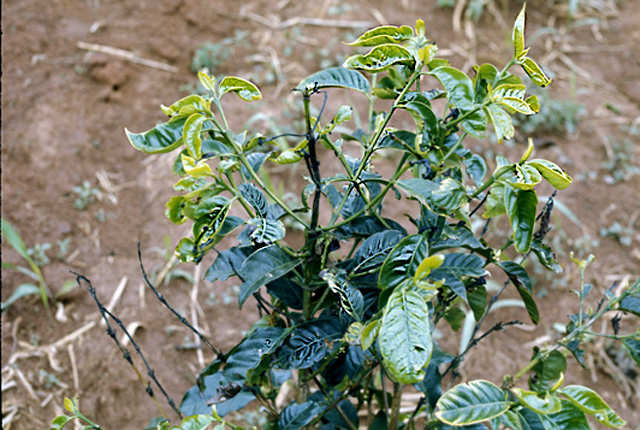
Halo blight | Coffee
DISEASE: Halo blight
HOST: Coffee (Coffea dewevrei)
PATHOGEN: Pseudomonas syringae pv. garcae
SOURCE: S. Mohan
DISEASE: Halo blight
HOST: Coffee
Stem blight stage of disease.
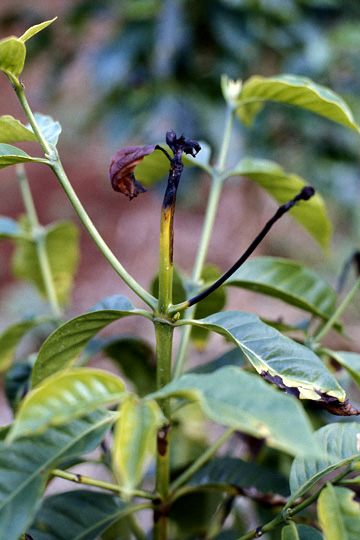
Halo blight | Coffee
DISEASE: Halo blight
HOST: Coffee (Coffea dewevrei)
PATHOGEN: Pseudomonas syringae pv. garcae
SOURCE: S. Mohan
DISEASE: Halo blight
HOST: Coffee
Coffee leaf with lesion on margin.
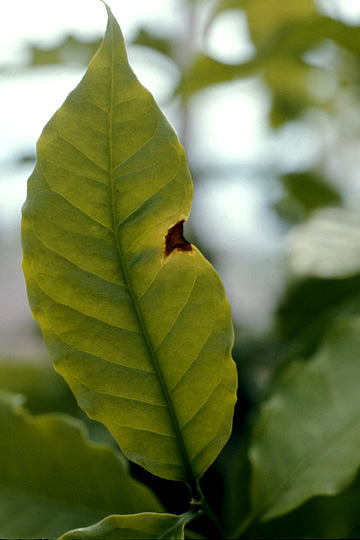
Halo blight | Coffee
DISEASE: Halo blight
HOST: Coffee (Coffea dewevrei)
PATHOGEN: Pseudomonas syringae pv. garcae
SOURCE: S. Mohan
DISEASE: Halo blight
HOST: Coffee
Halo blight infection of young seedlings.
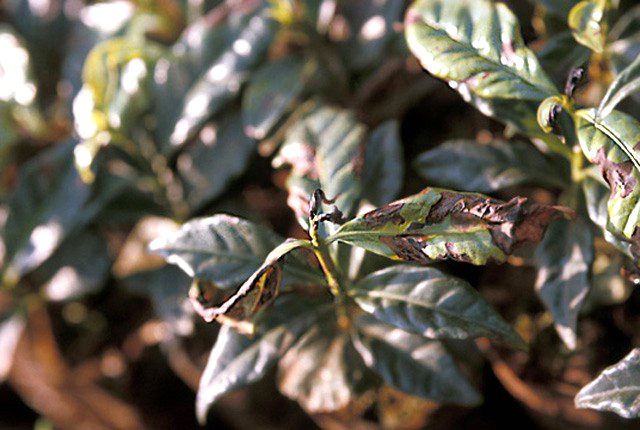
Halo blight | Coffee
DISEASE: Halo blight
HOST: Coffee (Coffea dewevrei)
PATHOGEN: Pseudomonas syringae pv. garcae
SOURCE: S. Mohan
DISEASE: Olive knot
HOST: Olive
Multiple infections of young stems. The bacterium invades vascular tissues during certain times of the year and may be isolated from branches that appear healthy.
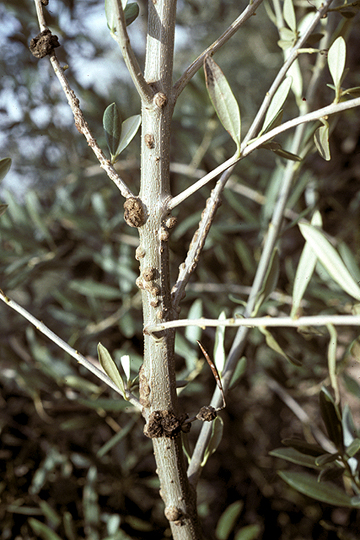
Olive knot | Olive
DISEASE: Olive knot
HOST: Olive (Olea europaea)
PATHOGEN: Pseudomonas savastanoi pv. savastanoi
SOURCE: M. Schroth
DISEASE: Olive knot
HOST: Olive
Tree with knots/galls on branches along with twig dieback, which is associated with knots. Fusarium and Diplodia spp. infect through knots and are thought to be main reason for dieback.
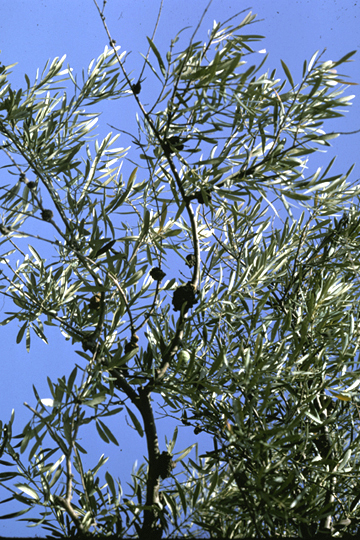
Olive knot | Olive
DISEASE: Olive knot
HOST: Olive (Olea europaea)
PATHOGEN: Pseudomonas savastanoi pv. savastanoi
SOURCE: M. Schroth


